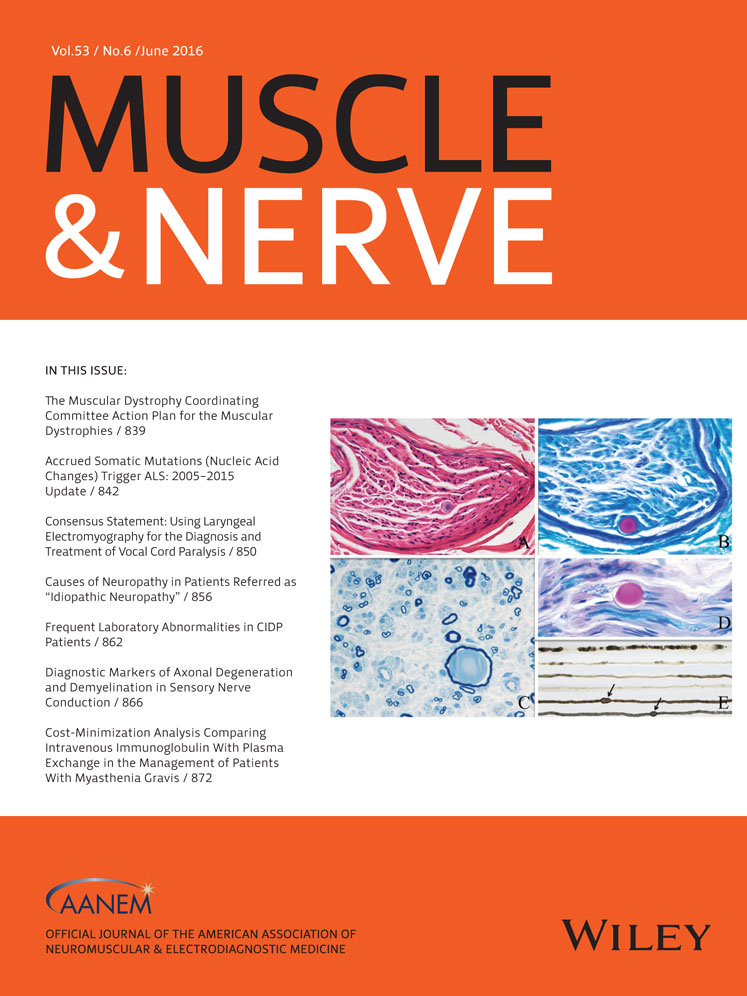Adult-onset respiratory insufficiency, scoliosis, and distal joint hyperlaxity in patients with multiminicore disease due to novel Megf10 mutations
ABSTRACT
Introduction: Multiminicore disease is a congenital myopathy characterized pathologically by the presence of multiple minicore structures in the sarcoplasm. Mutations in the selenoprotein N1–encoding gene (SEPN1) and ryanodine receptor 1–encoding gene (RYR1) are responsible for half of the reported cases. Mutations in multiple epidermal growth factor-like domains 10–encoding gene (MEGF10) have been identified only recently in a few patients with antenatal to infantile-onset myopathy, with and without minicore pathology. Methods: We report 2 sisters with adult-onset respiratory insufficiency followed by development of limb weakness. Both had scoliosis, distal joint hyperlaxity, and high-arched feet. Results: A biopsy of the right triceps muscle in 1 sister showed multiple minicore structures. She had electromyographic changes of myopathy with fibrillation potentials and myotonic discharges. Next generation sequencing identified novel compound heterozygous missense variants in MEGF10 c.230G>A (p.Arg77Gln) and c.1833T>G (p.Cys611Trp) in both sisters. Conclusions: MEGF10 mutations can cause myopathy with adult-onset respiratory insufficiency. Muscle Nerve, 2016 Muscle Nerve 53: 984–988, 2016




